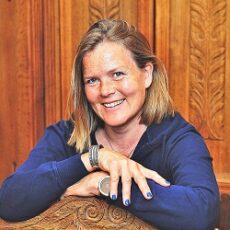Agreeing on and communicating a destination’s identity is a careful balancing act when there are multiple stakeholders involved, each with their respective opinions to share. How should destination managers or place brand specialists deal with such situations when every perspective, no matter how contrasting or divergent, needs to be considered for building a cohesive destination identity proposition?
We asked our panel of place specialists here at TPBO, as well as the Sustainability Leaders Project panel of destination pro’s (in alphabetical order – highlighted respondents are available as consultants or as speakers) and here is what they had to say.
Our key takeaways:
- Welcome different viewpoints to better understand the needs and problems of stakeholders
- The more opinions are heard and understood, the better destination managers can understand the aspirations of each group
- Different viewpoints must be acknowledged and even appreciated for better stakeholder engagement and to earn the locals’ trust in the destination’s identity
- Build consensus by holding open and honest discussions. Look for the common thread that can bind different ideas together
- More opinions can result in more creativity and inspiration for communicating destination identity
- People take pride in their city and its heritage, but every opinion included into the destination’s identity needs to be carefully evaluated and backed by evidence

Brian Mullis
USA | Over the course of the last 20+ years working in sustainable development, I have found that governments and key stakeholders generally want the same things: improved socio-economic opportunities and protection of their natural and cultural heritage. While they usually have conflicting opinions on how to best use tourism as a means to optimize positive socio-economic and conservation outcomes, everyone can benefit if they put their differences aside and work together to leverage their individual strengths, using proven principles and processes.
Efe Sevin
USA | Embrace the diversity! There are many stories you can tell about a destination and there are many audiences that want to hear parts of these stories. Moreover, the conflict itself will become a part of the destination’s identity since a conflict just shows us that there are many different groups vested in a destination.
Fiona Jeffery
UK | Collaborate and identify shared values and work to develop and focus on those initially.
Günter Soydanbay
Soydanbay Consulting / Speaker
Canada | In its essence, any place branding project is a change management project. According to change management professionals, resistance is a natural reaction to change. So, stakeholder conflicts should be expected and addressed proactively.
Often lack of common vision, disconnect with financial objectives, and lack of engagement are the key resistance points.
 Jonathon Day
Jonathon Day
USA | If tourism is to remain in destinations, it must maintain its social license. It must listen to the stakeholders in the community and respond to their concerns. That is fundamental to sustainability. But Stakeholder engagement doesn’t mean stakeholder consensus.
The leadership role of a DMO is to set a strategic direction with the greatest benefits for the destination community. If the direction is developed collaboratively with broad support, then accept that not everyone will be on board.
Poor outcomes occur when there isn’t a systematic approach to gathering feedback from key stakeholders – residents, travellers and visitors, tourism industry, etc – and the disgruntled, squeaky wheel becomes the only feedback to which the DMO reacts.

Kirsi Hyvaerinen
Montenegro | Have everyone openly present their views and moderate a fair discussion towards better understanding and joint solutions.
Martin Boisen
The Netherlands | Depends a lot on what those values are, mostly whether or not there’s a majority-minority issue at play. In general, I would recommend talking. Talk and then talk some more. And maybe there’s no way of mending the differences of opinion, but then at least that is very clear and not based on presumptions anymore. Then wait a year or two and then reestablish the conversation.
Natasha Grand
UK | Each stakeholder sees the destination through their own eyes and experience. To avoid stakeholder conflict over identity proposals, it is essential to justify them and explain them in terms of evidence, research, and context. In other words, identity is not a matter of opinion, but of evidence.
Robert Govers
Belgium | That’s the big challenge of place branding, indeed; particularly if you move beyond tourism and look at communities as a whole. It’s an intensive process of consensus-seeking.
Todd Babiak
Australia | Rely on the research.
Tom Buncle
UK | Listen to all stakeholders, gather evidence from both previous and prospective visitors, work with ‘opposing’ stakeholders to identify a shared vision, and then mould a way forward through discussion with them, which will, hopefully, be as close to consensus and a compelling identity as you can get.
Vicky Smith
The answer to any conflict is always two-way dialogue. To draw out and understand each other’s viewpoints, aims, assumptions, red lines, and priorities and to discuss and find a mutually agreeable solution for all.
Adam Mikołajczyk
Poland | The identity of a place should as a rule be homogeneous, while its interpretation, understanding and communication may vary. But I see no problem with this. Let the different stakeholders communicate it in their own way.
Andrea Lucarelli
Sweden | First one should consider that everyone has their own stake in a place. First, explain that a destination is mainly something for building an image (tourist). This might be easier to smooth out conflicting values. Second, try to find a good leader(ship) who is a catalyser.
Caio Esteves
Brazil | Involving stakeholders in the creative process has proven to be a great solution. More than involving them in the research and listening process, it is necessary to create joint solutions that generate shared goals. It is always a delicate and laborious process, but essential.
Technology has greatly helped collaborative processes, virtual workshop tools have been evolving since the beginning of the pandemic and today they are already efficient in bringing people together in co-creation processes even from different parts of the world.
Gianna Moscardo
Australia | I suggest going back to stories. Ask these diverse stakeholders to write down their stories of what matters to them about the destination, what stories they would tell others about the destination and find some common themes across those stories and build the destination identity around those themes. The aim is to show that people can have different stories about a destination but they share some common themes and that the destination brand is built on those themes.
But this is a problem more likely to happen when the destination identity and brand are not created from within the destination community. So go back and start with the destination community, not the tourism businesses, not the marketing consultants and not driven by attracting any particular market. Put the destination community and their stories first and then find the businesses that best fit within that story world and then go find the tourists who want to live and experience those stories.
Malcolm Allan
UK | This is a challenge I have been experiencing since I became an active place brander twenty-two years ago and one that persists today. And, given the diversity of types of stakeholders in places and the diversity of their views on the tourism sector, its component markets and their desired offers, events and facilities, this challenge will continue. The challenge then is to avoid seeking what may be a low level of agreement among all stakeholders which may be of little value to the place, rather it is to seek as high a level of agreement among the key stakeholders of the place (those whose offers are synonymous with its brand identity, its defining offers and its reputation), recognising that there will always be outliers and determined independent non-followers.
Rachel Dodds
Canada | First, it is important to listen to your stakeholders. Often the squeakiest wheel gets the most attention but it doesn’t mean it is the most important issue. If you take the time to listen or give ALL your stakeholders the opportunity to be heard, you can often determine some common ground between them or at least get an understanding of what the conflict is. If it is not possible for you to do it, find someone else who is objective or has no ‘stake’ in the game to do this.
Richard Butler
UK | Face reality, tourism is multi-faceted and stakeholders legitimately hold different views. Clear goals for a destination should be established after discussions with as many stakeholder representatives as possible. And those goals and ways to achieve them should be implemented.
Steve Noakes
Australia | Be patient, tolerant and respectful. Have credibility with your community of stakeholders. At some stage, you have to get them all within the ‘same tent’ to enable dialogue. My approach is to find out what are the common issues they agree on that can bring them together, and then gradually work outwards into the topics where there is less agreement and try to link those back to the core issues they have agreed on.
Previous questions answered by the panel here.
You’d like to ask the panel a question? Get in touch!
Enjoyed this snapshot of expert views on how to accommodate different opinions and viewpoints on the destination’s identity? Thanks for sharing!











